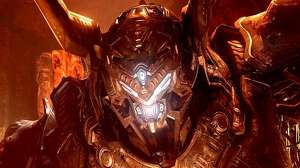
There’s no question about it – Doom Eternal is a remarkably impressive technical achievement. The id Tech 7 engine delivers exceptionally high-quality visuals at a smooth 60 frames per second across the full range of PlayStation and Xbox consoles. We witnessed a boost in texture quality, geometry density and world scale. It’s a game that really demonstrates the full potential of these machines, while laying the technological foundation for the next generation. In theory, this should make a potential Switch conversion of the game even more challenging than prior Panic Button ports of id Tech titles and yet, there’s a good argument here in saying that this the talented developer’s most impressive work yet.
Of course, by any virtually any measurable criteria – bar power consumption, of course! – the Switch rendition of Doom Eternal is the least preferable way to play the game. In fact, it calls to mind classic conversions like Quake for Sega Saturn. It was by far the least impressive version, yet the technological achievement in actually making it happen was simply immense. By extension, I can praise Panic Button’s work here while knowing full well that it is best played on other systems. That’s the key here – one can find such a port impressive and interesting while still acknowledging its shortcomings.
From my perspective, the focus of a port like this should always centre around recreating key aspects of the game in question while making intelligent cuts. Even with a reduction in visual quality, the game should retain its visual identity while offering performance characteristics that avoid spoiling the fun. If your port exhibits painfully long loading times, poor performance and a huge reduction of visual quality, it’s not a good conversion. With its prior id Tech ports, I feel that Panic Button delivered good work in achieving these objects. Doom 2016 and the various Wolfenstein titles all very clearly deliver the gameplay and visual signature of the original versions albeit at a lower resolution and frame-rate. However, each port exhibited flaws including bad frame pacing and slowdown.
